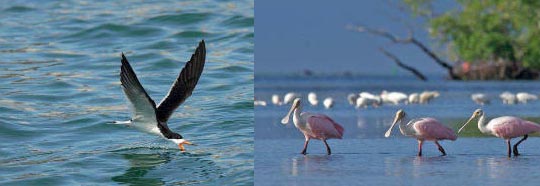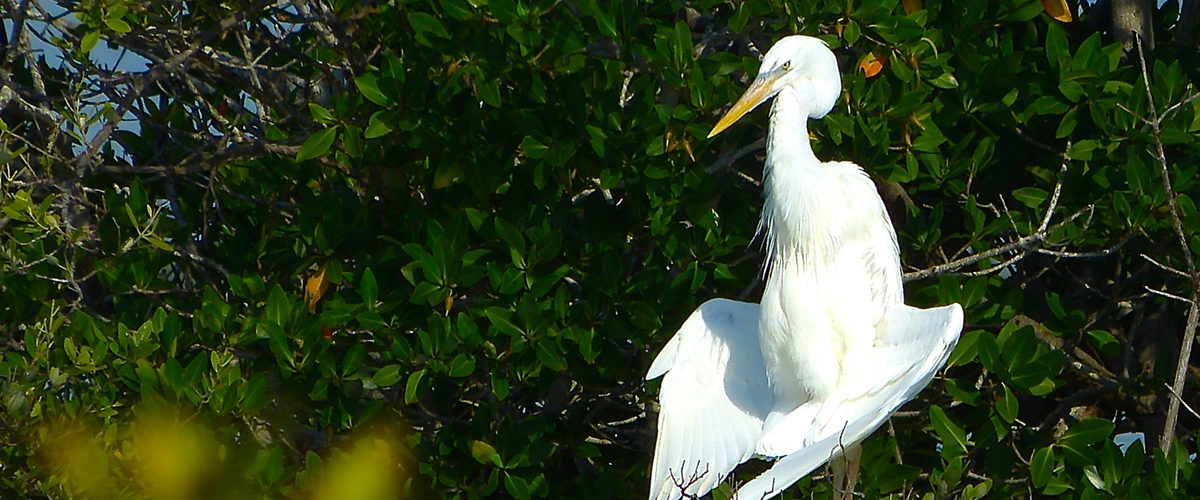Birding
 Participants of our half-day birding trips will be accompanied by an experienced local birder and naturalist guide who will point out different species and explain their habitat needs, behavior and ways to identify them.
Participants of our half-day birding trips will be accompanied by an experienced local birder and naturalist guide who will point out different species and explain their habitat needs, behavior and ways to identify them.
Two of the most productive and accessible birding sites in the region are right in suburban Collier County’s backyard: Tigertail Beach in Marco Island and Eagle Lakes County Park in East Naples.
Learn why Marco’s dynamic Tigertail Beach barrier island is one of the two top shorebird wintering grounds on Florida’s west coast and vital for waders, gulls and terns. Scan for over 50 species of birds at Eagle Lakes, including: bald eagles, night herons, egrets, moorhens, bitterns, ibises and woodstorks.
 This trip is suitable for beginners to intermediate birders. If you have not birded Southwest Florida, this is a chance to fill in some of the missing spaces on your life list.
This trip is suitable for beginners to intermediate birders. If you have not birded Southwest Florida, this is a chance to fill in some of the missing spaces on your life list.
Participants should bring their own binoculars and cameras. The guide will bring a scope for close-up viewing. For the beach-birding component of the trip, participants should bring appropriate foot-ware. The lagoon beach that attracts so many birds can be muddy.
 From tiny scurrying plovers to magnificent birds of prey, Southwest Florida sees over 350 species of birds throughout the year. It is both a seasonal haunt for snowbirds and a year-round home for native breeders. In addition, many hawks, wablers, other passerines and shorebirds pass through during fall and spring migrations.
From tiny scurrying plovers to magnificent birds of prey, Southwest Florida sees over 350 species of birds throughout the year. It is both a seasonal haunt for snowbirds and a year-round home for native breeders. In addition, many hawks, wablers, other passerines and shorebirds pass through during fall and spring migrations.
Collier-Seminole State Park contains one of the only remaining accessible tropical hardwood hammocks in Collier County. The fruits of the gumbo limbo, poisonwood, fig and blolly trees along the trail attract the rare white-crowned pigeon. Yellow-throated and Red-eyed vireos, wintering and migrating warblers, woodpeckers and hawks can also be seen along the trails in the park.

The Okaloacoochee Slough State Forest, in the northeastern edge of Collier County, contains one of the most pristine wet prairies left in South Florida. Birds of prey such as crested cara cara, Everglades kites, northern harriers and red-shouldered hawks keep watch over the open grasslands. Black-bellied and fulvous whistling ducks and mottled ducks breed and raise young in the wetlands. Sandhill cranes ply the drier parts of the prairies for seeds and tubers. Common moorhens, purple gallinules, lesser and greater yellowlegs and other freshwater shore birds on pond edges.

